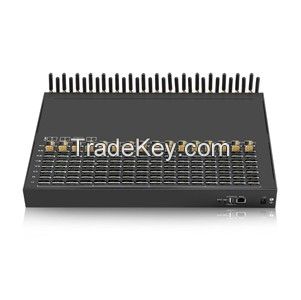*2 ports with *2 physical card slots, each port can write 8
esim cards, similar to *****6
ESIM Device Data Operation Manual
1. Identifying eSIM Devices
The software interface of eSIM devices differs from that of
other devices, characterized by a white "eSIM" label in the top
right corner of the software page, indicating eSIM
functionality support. When this "eSIM" label is white, it
signifies that eSIM functionality is not enabled. In such
cases, the device can only use physical SIM cards. For example,
if you have purchased a GOIP **2 eSIM device and eSIM is not
enabled, you can insert up to *2 physical SIM cards for
operation.
Enabling eSIM
To use the eSIM function, you need to enable it. Follow these
steps:
1. Go to eSIM.
2. Navigate to eSIM Settings.
3. Find the eSIM option and enable it.
4. After clicking enable, save the settings and reboot the
device to apply the changes.
Once the device restarts, the eSIM function will be
activated.
2. Once the device comes back online, user will notice that the
"eSIM" label in the top right corner has turned green. This
indicates that the eSIM function is now enabled. Additionally,
user can view the eSIM data, including the eUICC ID, in the
eSIM status section.
3. eSIM Data Writing
Efficiently recognize and process the received eSIM activation
QR code to extract the essential activation data, such as:
`LPA:1$testsmdpplus.infineon.com$******************3`. Place
this data into the activation code field in "eSIM > eSIM
Settings", as shown in the image below (Figure 3). Then, click
the "Write" .
4. Once the eSIM data is successfully written, user can see the
green ICCID code in "eSIM > eSIM Status" (as shown in Figure
4).After successful registration, user can make calls and
send/receive sms messages.
5. If the user needs to change/delete the eSIM data, user can
delete the written eSIM data by clicking the delete on
the "eSIM > eSIM Settings" page (as shown in Figure 5).
Bulk SMS Marketing: Send promotional messages to a large
audience quickly and efficiently.
Alerts and Notifications: Distribute time-sensitive alerts or
notifications for events, reminders, or emergencies.
Customer Engagement: Improve customer interaction through
personalized SMS communication and feedback requests.
Two-Way Messaging: Facilitate interactive communication by
allowing customers to respond to messages, enhancing
engagement.
Application Integration: Integrate with existing systems or
CRMs to automate SMS notifications based on user actions or
events.
Performance Monitoring: Track the success of SMS campaigns with
real-time delivery analytics and reporting.
Event Management: Use for ticket confirmations, reminders, and
updates during events.

